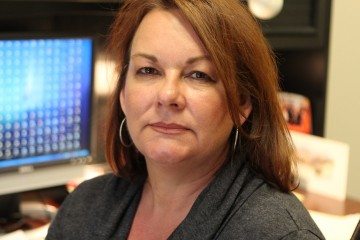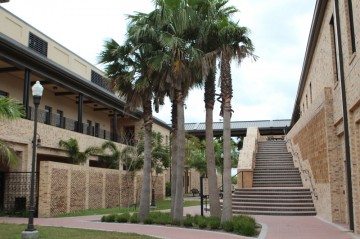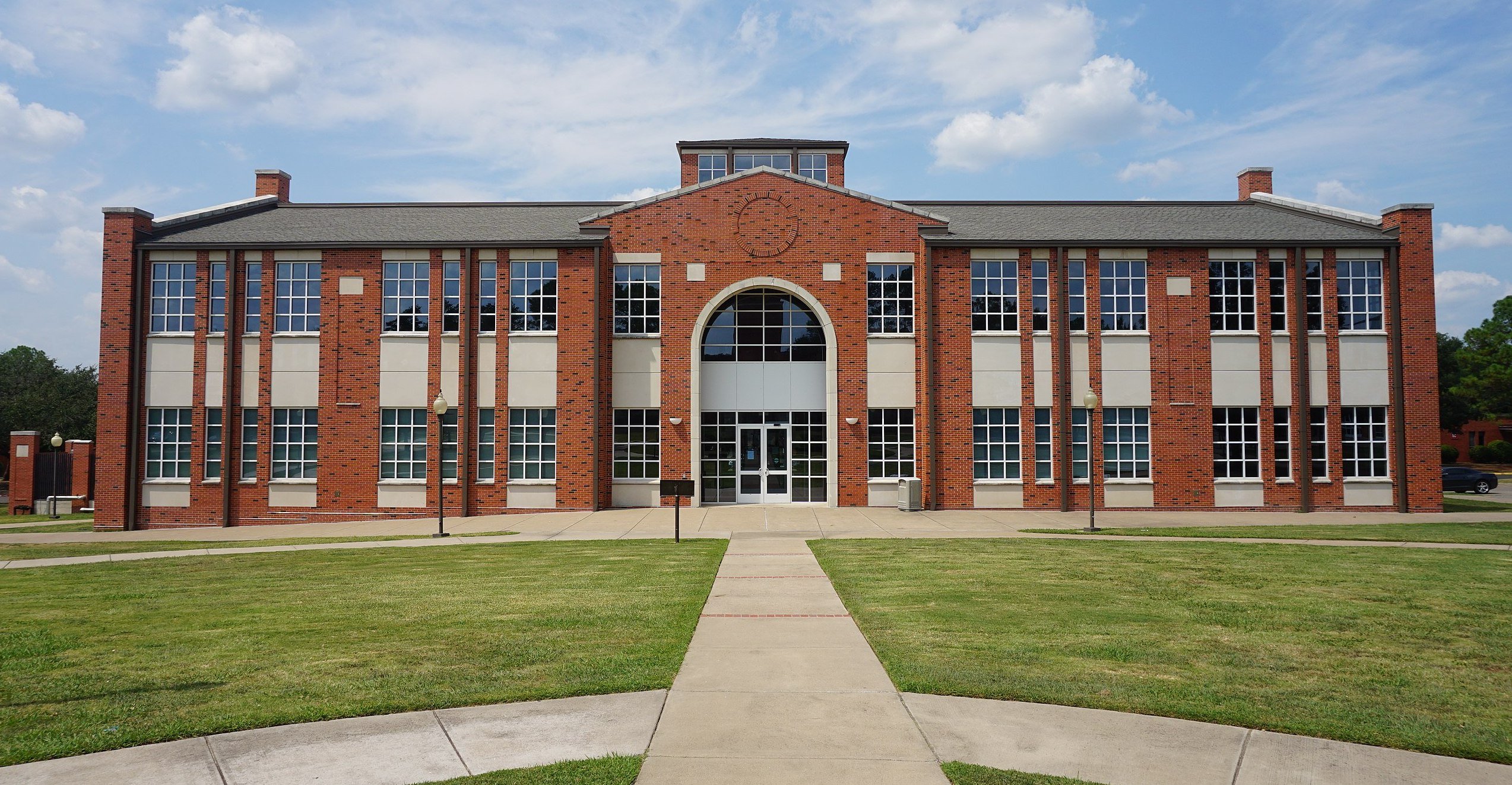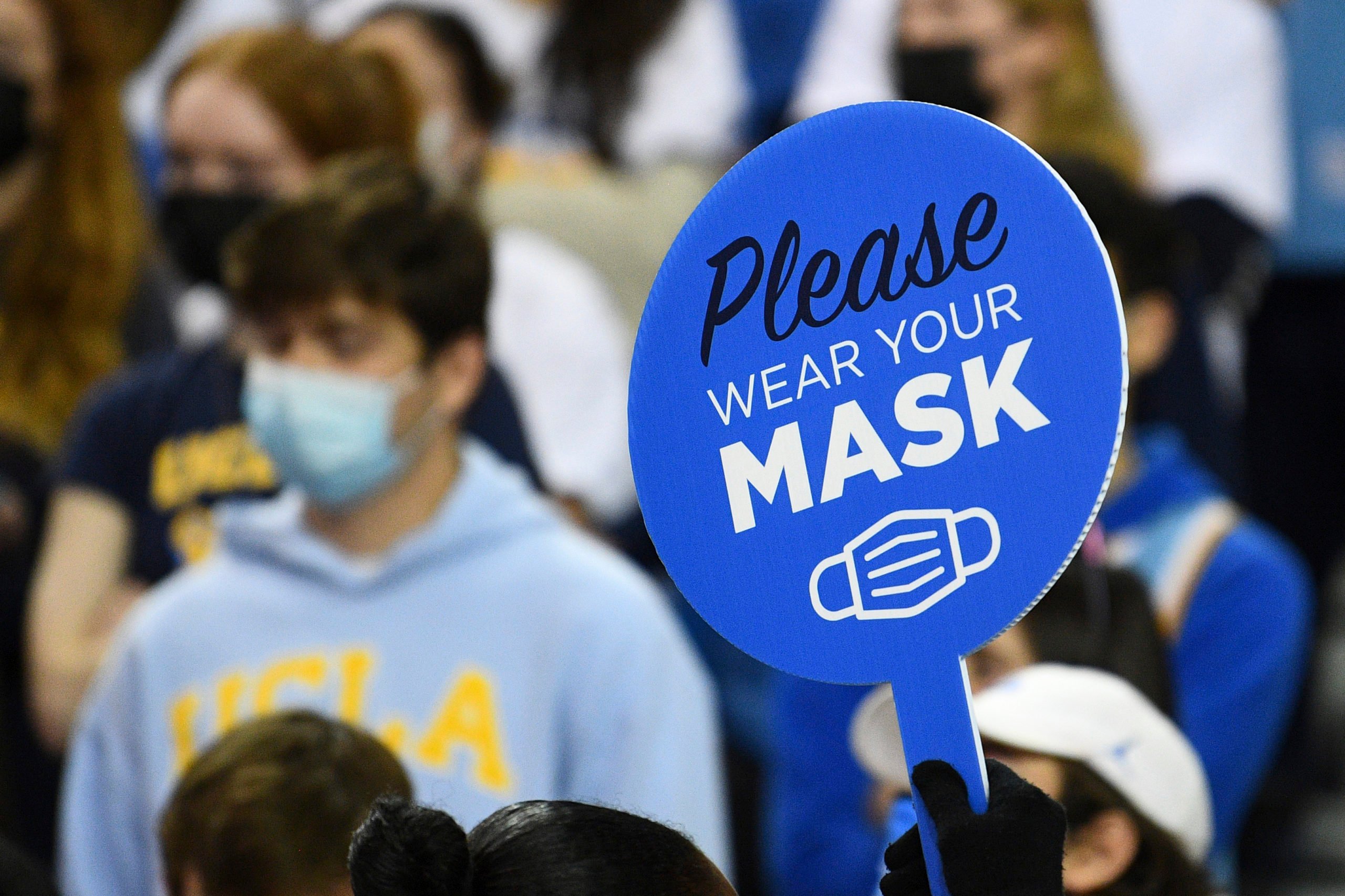
In Brownsville, Two Colleges Split and a Community Suffers
The separation of UT-Brownsville and Texas Southmost College leads to hundreds of layoffs.
Above: This water tower is among the facilities UT-Brownsville and Texas Southmost College will need to sort out as they split. See details of the split in a timeline below the story.
Karen Fuss-Sommer came to Brownsville in the 1980s for a nursing job. Over the years she made friends in the community, raised two daughters as a single parent and helped build the University of Texas at Brownsville’s nursing program. Eventually she was granted tenure, and if everything had gone as planned, she says, she could have retired in 2017.
But the end to Fuss-Sommer‘s and many others’ tenures at UT-Brownsville wasn’t quick and unexpected. Fuss-Sommer, now 50, is one of the hundreds of many faculty members at UT-Brownsville and Texas Southmost College losing their jobs as the schools spit up after a 20-year partnership. Their once-groundbreaking alliance, the only one of its kind in the nation between a community college and a state-funded university, is slated to end August 31, 2015.
For Fuss-Sommer, the loss of her job after two decades is hard to comprehend. “I’m a dedicated employee, have been a dedicated faculty member of our institution from the day I stepped on that campus, and this is how it ends for me,” she says.
At the same time, the state is creating a new super-school for the Rio Grande Valley, combining UT-Brownsville with UT-Pan American in nearby Edinburg. With a new medical school and far more state funding, the new university is ushering in an exciting time for higher education in the Valley—unless you’re one of the hundreds laid off.
Texas Southmost College, a junior college founded in 1926, struck up its partnership with the UT System in 1991. The Mexican American Legal Defense and Education Fund, or MALDEF, had sued the state, arguing that Texas wasn’t spending enough on higher education in South Texas and was discriminating against minority students. The lawsuit was unsuccessful, but the 72nd Legislature responded to the pressure by forming UT-Brownsville in conjunction with TSC.
The partnership allowed UT-Brownsville to use TSC’s buildings, while the UT System paid rent. The partnership combined the community college’s local tax revenue with state funding—more money than either school could raise on its own. TSC’s locally elected trustees could still give input, but all the faculty and staff went on the UT System’s payroll.
Students in the Valley, where 35 percent of the population lives below the poverty line, got a university education for the lowest tuition in the UT System and still enjoyed open enrollment for any student with a high school diploma or a GED, which is normally only available through community colleges in Texas.
“The Valley needed that,” UT-Brownsville President Juliet Garcia says today. “We saw students expand their own horizons.”
This marriage of a community college and a state-funded university was the only one of its kind in the nation. The way their relationship has unraveled, it’s no wonder why.
Trouble surfaced in 2009, when UT-Brownsville and TSC asked the Legislature for $10 million to help UT-Brownsville make its rent payments to TSC. The Legislature kicked the problem back, asking the UT System and the TSC Board of Trustees to figure out how to pay for the rent. But the rent money was just the latest in a series of clashes between the two institutions. In November 2010, the UT Regents voted to dissolve the partnership, saying the alliance had become “untenable.” UT-Brownsville President Garcia says that the joint governance of two schools under one roof contributed to the strain.
The once-groundbreaking partnership is slated to end August 31, 2015, the date when both schools could earn separate accreditation through the Southern Association of Colleges and Schools.
Garcia announced the divorce at a campus meeting in November 2011. She says the break-up felt like a split in the community, with residents choosing sides. But she says the split is a “natural progression” for higher education in the Valley.
Joe Molina, editor of The Collegian, the campus newspaper, says the whole community was upset. He says students wondered whether they had enough credits to stay at UT-Brownsville, or would be forced to enroll at TSC. Faculty and staff began speculating about what the split would mean for their jobs. Some began looking for work elsewhere.

Some, like Fuss-Sommer, could at least fall back on a unique sort of protection as part of a group known as “the 92ers,” faculty hired in the year before the merger in 1992. The administration has offered special job protection to the 92ers: if the two schools ever broke up, the 92ers were guaranteed a similar job at TSC after the split.
UT-Brownsville developed a plan to downsize its staff to match an enrollment that declined from 15,000 students in 2011 to 7,000 by the start of 2013. “We knew it had to happen,” Garcia says. “But none of us … were expert in how to make it work in an equitable way.”
Early in March 2012, UT-Brownsville formed review committees to determine which faculty would stay with the school, and which would be let go. The committees ranked faculty based on advanced degrees or tenure status. Teachers at the bottom of the list got cut. The goal was to create an objective rubric for the type of faculty each department wanted to keep—but some departments were so small, it was obvious who would lose their jobs. Fuss-Sommer, whose layoff came in that second round, calls it “a perfect opportunity to get rid of people you don’t like.”
Garcia says the committees were also populated to include both tenured and non-tenured faculty, to avoid subjectivity. “There was no way for any one person to tilt the result,” she says.
The layoffs began in late March 2012, with 30 adjunct professors who taught trade courses like air conditioning or car maintenance. At the end of April, Fuss-Sommer and 104 other faculty members—nearly a fifth of the school’s 518 total faculty—were also let go. Of those laid off, 53 were tenured.
Some faculty retired or left for other jobs before the final layoff notice. Others, like Fuss-Sommer, fought back.
First she appealed her termination, arguing that even after the split UT-Brownsville would still have a nursing college and would need an assistant dean. She asked why the administration laid her off but kept untenured, less experienced faculty in her department. She said administrators hadn’t shown the “good cause” required to fire her now that she had tenure.
In July, she received a final notice asking her to sign a severance deal: give up her tenure and her right to sue UTB or the UT System and waived all her grievances, she would get an eighth of her salary as severance pay.
Fuss-Sommer refused to sign the severance deal. Instead, she went to her union lawyer, Russell Ramirez, with the Texas Faculty Association and the Texas State Teachers Association. She and Ramirez—who is also representing three others similarly laid off by UT-Brownsville—are looking into suing the school over its handling of the layoffs.
“There’s no consistency to it,” Ramirez says. “Some people are staying without Ph.D.s and other people aren’t. … It really looks like cronyism to me, where they’re just picking all of the people that they want or they don’t want.”
Ramirez calls it a “really baroque system” developed by UT-Brownsville Provost Alan Artibise to “shield what he’s really doing, which is firing tenured professors.”
Another laid-off tenured faculty member, English professor Susan Mills, sued the school in April, contending the layoffs were part of the administration’s broader attack on tenure rights.
“Downsizing is a Myth,” Mills’ lawsuit argues. “If the downsizing of UT-B were a reality, UT-B would not be hiring faculty at the same time it is releasing nearly ninety faithful educators. … The real reason is financial exigency.”
So far, Ramirez has also filed a complaint with the federal Equal Employment Opportunity Commission, citing “a disparate impact on people who are over 40,” he says. The EEOC told Ramirez it would assign staff to investigate his allegations of ageism and cronyism, which he hopes will help him file a federal lawsuit. Ramirez estimates that it will be years before Fuss-Sommer and the other dismissed faculty could make their case in court.
TSC officials have told Fuss-Sommer they know the school must take her on as part of the old agreement, but she says they’ve been fuzzy on the details. Fuss-Sommer says TSC has even told the 92ers they may have to apply for a new position.
TSC officials say the school is discussing how to make room for the 92ers, which include 23 staff and 24 faculty, including Fuss-Sommer. Although the staffers have jobs with UT-Brownsville through August, dismissed faculty members have less than a month until the end of their employment.
In late March, Garcia told the Observer the upheaval is all part of the grand transition for higher education in the Valley. “This is just a moment. … It is the launching of a new university,” she said. “We need good faculty. We need good staff. We were trying to [lay off] the least number.”
One week after she said that, on April 2, UT-Brownsville sent pink slips to 257 staff members, bringing the total number of fired employees to 362. Again, the layoffs were attributed to the anticipated lower number of enrolling students after the separation in September 2013. UT-Brownsville gave its staff the rest of the day off that Tuesday, and then expected employees to come back to work the following day.
“It was like a morgue,” recalls Terry Garrett, Brownsville chapter president of the Texas Faculty Association, and a tenured UT-Brownsville government professor. “We’re talking about a region of Texas that is the poorest in the state. … So what is the impact going to be in the community of Brownsville?” he wonders. “It’s just a horrendous sort of thing.”

UT-Brownsville has begun moving out of the TSC-owned buildings and into the four it owns independently. The UT Regents are considering 12 sites for new UT-Brownsville campus buildings, for which they’ve requested $151.6 million from the state. For now, UT-Brownsville plans to share classrooms with TSC for a few more years, though the schools are still negotiating the rent.
“I have a lot of anguish about the break-up and the results of it,” says Rep. Rene Oliveira (D-Brownsville), who was behind the legislation that created the original partnership. “These were some of the reasons I did not want them to break up. … It’s an incredible blow to these individuals and to the community. “
But legislators and UT System officials hope the community will ultimately benefit from the break-up, and state leaders are stoking excitement about the new super-school for the Valley that will bring together UT-Brownsville and UT-Pan American in Edinburg. The UT System projects the new school could enroll the second largest number of Hispanics of any school in the nation, and top administrators have promised not to lay off more faculty as the schools merge. Faculty in the Valley have heard similar promises before.
Oliveira says the merger is the best long-term solution, and shouldn’t be seen as related to the tumultuous split with TSC. “I think it’s sort of the old saying: one door closes, another opens.”
Beth Cortez-Neavel is a graduate student at the University of Texas-Austin and an Observer reporting intern.


